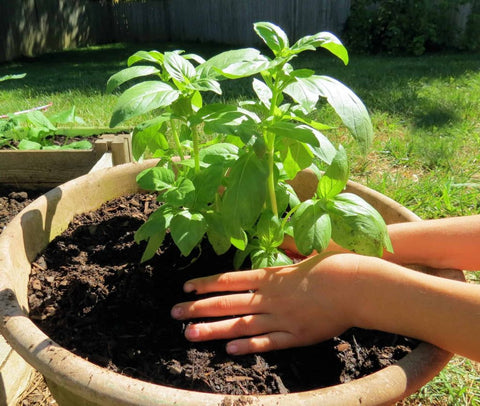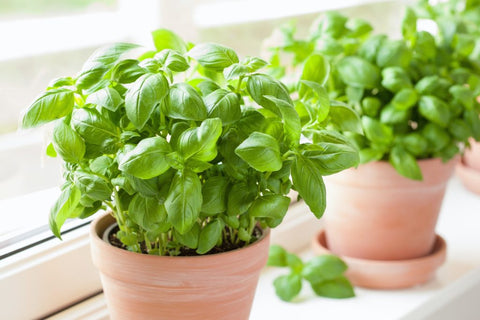Basil is a popular herb in home gardens, known for its rich flavor and potential health benefits. While growing basil can be relatively easy, it's important to address issues like yellowing leaves, which can hinder its productivity. In this blog post, we'll explore the reasons behind basil leaf yellowing and provide solutions to help you grow thriving basil plants.

- Lack of Sunlight
Basil plants require abundant sunlight for photosynthesis and healthy growth. Inadequate sunlight can lead to nutrient deficiency and ultimately yellowing leaves. To prevent this, ensure your basil is placed in a sunny spot where it can receive sufficient sunlight.
- Overwatering
While water is essential for plant growth, overwatering can lead to problems like root rot. Excess water causes cells to swell and burst, making it difficult for the plant to absorb necessary nutrients. To avoid overwatering, water your basil moderately and ensure proper drainage.
- Lack of Nutrients
Yellowing basil leaves may indicate nutrient deficiency in the soil. To address this, treat the soil with compost or organic vegetable fertilizer before planting. This will provide essential minerals for healthy basil growth.
- Disease and Pest Infestation
Pests and diseases, such as downy mildew, can cause yellowing leaves in basil plants. Downy mildew is characterized by yellow leaves and fluffy fungal growth on the undersides. To prevent this, have a solid plan to control pests and diseases. Pruning affected leaves or plants can help stop the spread.

Tips to Prevent Basil Leaf Yellowing
- Proper Spacing: Ensure you plant basil with adequate spacing to avoid competition for nutrients and sunlight. Thinning overcrowded plants is also essential for their health.
- Use Pesticides: Use pesticides when necessary to control pests in your garden. Identify the specific pest infesting your basil to choose the right pesticide.
Frequently Asked Questions
Should I remove yellow leaves from the basil plant? Yes, consider pruning affected leaves and plants to prevent the spread of diseases.
Why do basil plant leaves turn yellow? Common reasons include downy mildew, lack of nutrients, overwatering, and insufficient sunlight.
What does an overwatered basil plant look like? An overwatered basil plant may have rotting roots, yellow and droopy leaves, and a weakened stem.
How often should basil be watered? Water your basil every 3 to 4 days, adjusting the frequency based on temperature and sunlight conditions.
Basil is a valuable herb in the culinary world, known for its flavor and health benefits. While yellowing leaves can be a common challenge for basil growers, understanding the causes and implementing preventative measures can help you maintain healthy basil plants. By providing the right amount of sunlight, water, nutrients, and pest control, you can enjoy a thriving basil garden and enhance your culinary creations.









